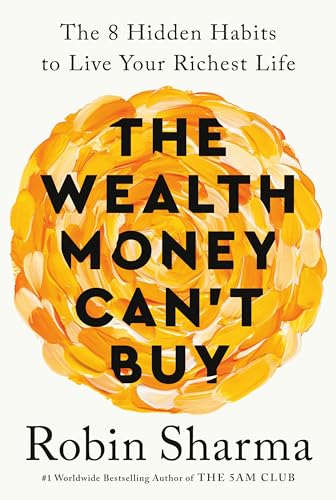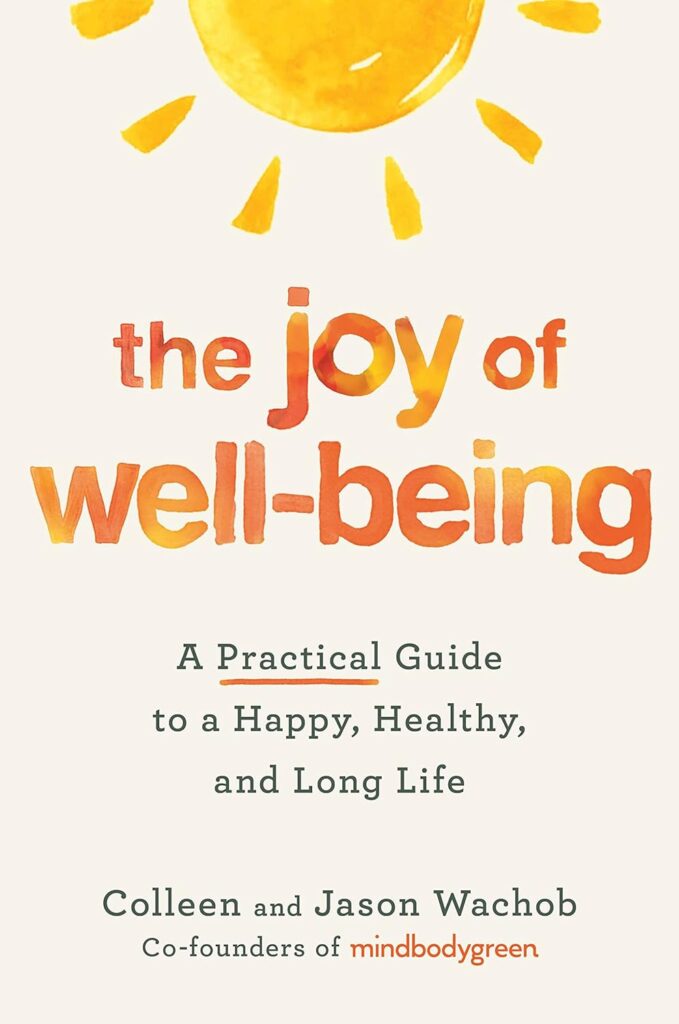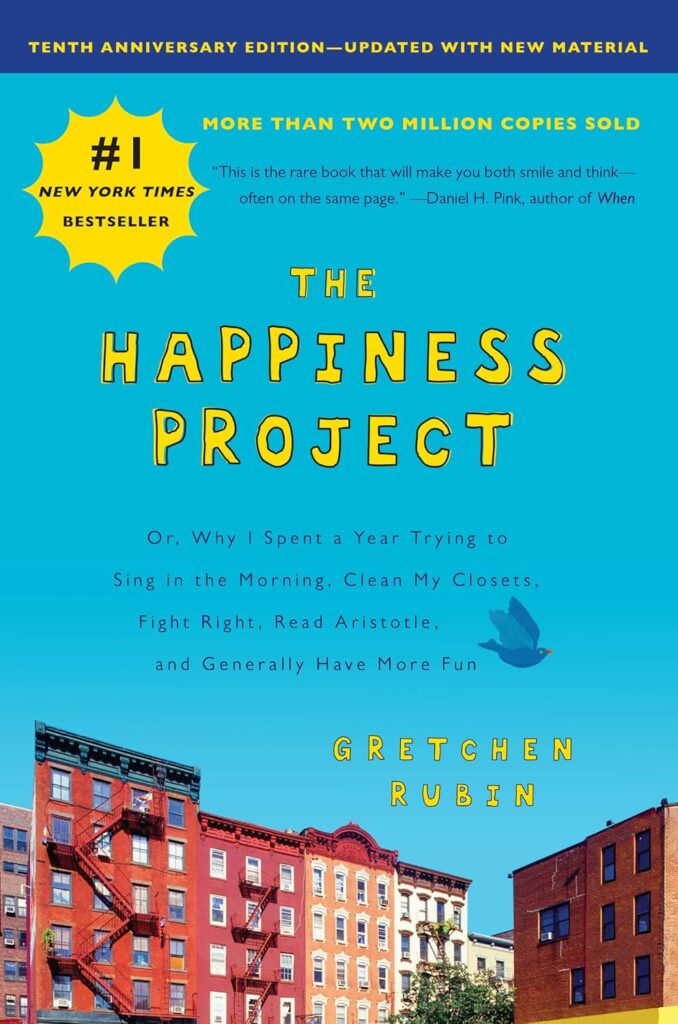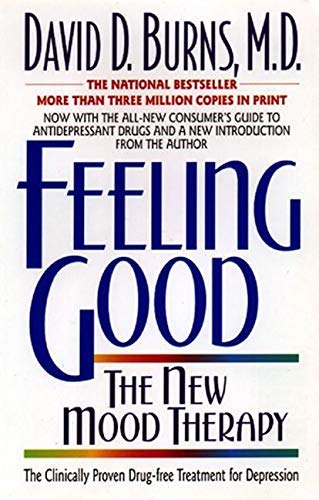“Caring for the mind is as important and crucial as caring for the body. In fact, one cannot be healthy without the other.”
Sid Garza-Hillman
We’ve carefully selected 7 remarkable books that are destined to become your new wellness companions. These books are like treasure troves, overflowing with practical advice, strategies, and insights about well-being and holistic health. They’re filled with actionable tips, enlightening insights, and innovative ideas that will help you live a more balanced life in all aspects, not just physically.
So, whether you’re a health enthusiast looking to deepen your understanding, a professional seeking to enhance your well-being, or just someone striving for a healthier lifestyle, these books are perfect for you. They’re packed with techniques that are not only highly effective but also easy to implement, which is what our Well-being Wisdom Club is all about, Act Upon Your Wellness.
So, get ready to elevate your well-being journey!
Think This Not That Dr. Josh Axe

“Think This Not That: 12 Mindshifts to Breakthrough Limiting Beliefs and Become Who You Were Born to Be” by Dr. Josh Axe is a transformative guide that aims to help readers break free from limiting beliefs and achieve their full potential.
The book is centered around the concept of ‘mindshifts’, which are essentially changes in perspective or thinking patterns. Dr. Axe identifies twelve common mental barriers that often hold people back from realizing their potential. These barriers can range from lack of clarity about one’s purpose, defining success based on accomplishments rather than personal growth, playing the victim instead of taking charge, being controlled by vices instead of cultivating virtues, and living by popular opinion instead of following enduring principles of wisdom.
For each of these barriers, Dr. Axe provides an alternative, empowering mindset. For instance, instead of drifting aimlessly, he encourages readers to clarify their purpose. Instead of defining success by what they accomplish, he suggests they should base it on who they become.
The book is not just about identifying these mindshifts, but also about implementing them in daily life. Dr. Axe provides practical steps and strategies to help readers make these shifts in their thinking patterns. The ultimate goal is to help readers break free from the mental barriers that have kept them stuck and start exploring and growing beyond the limits they thought they had.
In the context of well-being, this book offers a comprehensive approach. It doesn’t just focus on physical or financial health, but also emphasizes the importance of emotional intelligence, self-awareness, and personal growth. By making these mindshifts, readers can improve the quality of their relationships, enhance their career, and ultimately, build a more meaningful and fulfilling life.
Overall, “Think This Not That” is a powerful guide for anyone seeking to transform their life and achieve a higher state of well-being. It’s about breaking free from limiting beliefs, sparking personal growth, and building a life of ultimate significance.
The Wealth Money Can’t Buy by Robin Sharma

“The Wealth Money Can’t Buy: The 8 Hidden Habits to Live Your Richest Life” by Robin Sharma is a groundbreaking book that redefines the concept of wealth. It goes beyond the traditional understanding of wealth as financial prosperity and introduces eight forms of wealth that contribute to a fulfilling life. These forms of wealth are:
1. Growth
2. Wellness
3. Family
4. Craft
5. Community
6. Adventure
7. Service
8. Money
The book provides a life-altering system that helps readers lead their richest life before it’s too late. It offers a framework based on the eight hidden habits used by authentically rich people. The book is filled with practical tools and transformational tactics, offering a life-changing philosophy and methodology for enjoying a genuinely rich life.
The book emphasizes that real wealth is about more than just money. It’s about leading a rich and abundant life filled with joy, peace, and freedom. It argues that too many financially prosperous people are surprisingly poor when it comes to the things that truly matter for a life of happiness, vitality, and serenity.
Sharma provides practical tools and transformational tactics to help readers cultivate these eight forms of wealth. He shares insights on how to become a “perfect moment” creator, why your choice of mate is 90% of your joy, the power of “The 10,000 Dinners Question”, and the brilliance of “going ghost” for a year.
In the context of well-being, this book offers a comprehensive approach. It doesn’t just focus on physical health or financial stability, but also emphasizes the importance of emotional intelligence, self-awareness, personal growth, and community involvement. By following Sharma’s model of the eight forms of wealth, readers can create truly abundant and fulfilling lives.
Overall, “The Wealth Money Can’t Buy” is a powerful guide for anyone seeking to transform their life and achieve a higher state of well-being. It’s about breaking free from limiting beliefs, sparking personal growth, and building a life of ultimate significance.
The Joy of Well-Being by Colleen Wachob and Jason Wachob

“The Joy of Well-Being: A Practical Guide to a Happy, Healthy, and Long Life” by Colleen Wachob and Jason Wachob is an empowering and accessible guide to health and wellness. The co-founders of mindbodygreen, a leading wellness lifestyle media brand, challenge our traditional definition of self-improvement by revealing what a healthy lifestyle looks like at the fundamental level.
The book is a distillation of almost fifteen years of experience on the forefront of the well-being conversation. It explores the spectrum of well-being, from how we breathe to how we love, and includes topics such as:
Why sleep should be considered a vital sign
Why you shouldn’t trick your body with food
How to overcome the motivation problem and move more
The importance of relationships for longevity
The authors argue that our understanding of health has been hijacked by the echo chamber of the internet and social media algorithms that favor polarizing opinions to drive views and engagement. They aim to cut through this noise and provide practical advice for everyone seeking to live a happier, healthier, and greener lifestyle.
In the context of well-being, this book offers a comprehensive approach. It doesn’t just focus on physical health, but also emphasizes the importance of emotional intelligence, self-awareness, personal growth, and community involvement. By following the advice in this book, readers can create truly abundant and fulfilling lives.
Overall, “The Joy of Well-Being” is a powerful guide for anyone seeking to transform their life and achieve a higher state of well-being. It provides the answers to timeless questions around health, happiness, and longevity, making it a blueprint for optimizing your mental and physical well-being.
The Happiness Project by Gretchen Rubin

“The Happiness Project” by Gretchen Rubin is a memoir that chronicles the author’s year-long journey to discover what leads to true contentment. Drawing on cutting-edge science, classical philosophy, and real-world applicability, Rubin has created an engaging, eminently relatable chronicle of transformation.
The book is structured around Rubin’s twelve personal commandments for happiness, each of which is explored in a monthly chapter. These commandments are broad principles by which she strives to live her life, such as “Be Gretchen” and “Do it now”.
In the context of well-being, “The Happiness Project” is a practical and proactive approach to one’s personal happiness. Rubin’s project is an exercise in mindfulness and intentionality, an effort to make conscious decisions about how to live a fulfilling life. She encourages readers to identify what brings them joy, satisfaction, and engagement, and to make resolutions that include concrete actions that will boost their happiness.
For example, in January, Rubin focuses on boosting her energy and vitality, which includes getting more sleep and exercise, and decluttering both mentally and physically. In subsequent months, she explores everything from love and work to money and mindfulness, all with the aim of cultivating a happier and more fulfilling life.
Throughout the book, Rubin emphasizes that the key to happiness is not in our circumstances but in our perspective and actions. By changing our habits and our way of thinking, we can significantly improve our happiness.
Overall, “The Happiness Project” offers valuable insights and practical advice on how to create happiness in one’s own life. It’s a reminder that happiness is not a destination, but a continuous journey of self-improvement and self-discovery. It’s about making the choice to prioritize happiness and taking small, manageable steps towards achieving it. Rubin’s journey offers readers a roadmap to navigate their own paths to happiness, making this book a valuable guide for anyone seeking to live a more joyful and meaningful life.
Feeling Good: The New Mood Therapy by David D. Burns

“Feeling Good: The New Mood Therapy” by David D. Burns is a seminal work in the field of self-help and psychology. It introduces the principles of cognitive-behavioral therapy, a therapeutic technique that has been scientifically proven to be effective in combating depression, anxiety, and other mood disorders.
The central premise of the book is that our moods are created by our thoughts. Therefore, by learning to identify and restructure our negative thoughts, we can change our moods and improve our overall well-being. Burns identifies ten common cognitive distortions that often lead to negative emotions, such as all-or-nothing thinking, overgeneralization, and mental filtering.
In the context of well-being, the book offers practical tools and strategies to help readers overcome these cognitive distortions. For example, Burns provides techniques for dealing with feelings of worthlessness, guilt, and hostility, as well as overcoming addictions to love and approval. By learning to recognize and challenge these distorted thoughts, readers can reduce their emotional turmoil and improve their mood.
Moreover, the book emphasizes the importance of effective communication for maintaining good relationships and achieving personal goals. It provides methods to improve communication skills, which can lead to better interpersonal relationships and increased self-esteem.
In summary, “Feeling Good: The New Mood Therapy” offers a comprehensive approach to improving one’s mental and emotional well-being. By teaching readers how to change their thought patterns, it empowers them to take control of their moods and live happier, more fulfilling lives. It’s a valuable resource for anyone seeking to understand and improve their mental health.
Man’s Search for Meaning by Viktor E. Frankl

“Man’s Search for Meaning” by Viktor E. Frankl is a profound book that chronicles Frankl’s experiences as a prisoner in Nazi concentration camps during World War II, and introduces his psychotherapeutic method known as logotherapy.
The book is divided into two parts. The first part recounts Frankl’s personal experiences of the Holocaust. Despite the horrific conditions, Frankl observed that people still searched for meaning even in the direst moments. The second part introduces logotherapy, a therapeutic approach that posits the desire for meaning as a fundamental human drive, even more so than the desire for pleasure or power.
In the context of well-being, “Man’s Search for Meaning” offers a unique perspective. It suggests that our well-being is deeply tied to our sense of purpose and meaning in life. Frankl argues that even in the most adverse circumstances, we have the freedom to choose our attitude towards life. He identifies three ways to find meaning in life: through work (completion of tasks), through love (caring for another person), and through suffering (facing suffering with dignity).
Frankl’s experiences in the concentration camps led him to the realization that our ability to find meaning in life can help us endure and overcome the most challenging circumstances. He found that those who could find meaning in their suffering were more resilient and more likely to survive.
In summary, “Man’s Search for Meaning” is a powerful exploration of the human spirit and its capacity to find meaning and purpose even in the most difficult circumstances. It offers valuable insights into the role of meaning in our lives and its impact on our well-being. It’s a reminder that our ability to find meaning in life can be a source of strength and resilience, helping us navigate life’s challenges and enhancing our overall well-being.
The Power of Now by Eckhart Tolle

“The Power of Now: A Guide to Spiritual Enlightenment” by Eckhart Tolle is a transformative book that explores the concept of living fully in the present moment, which Tolle refers to as the “Now”.
The book is divided into two main sections. The first part is a detailed account of Tolle’s own spiritual awakening, which occurred after a period of intense personal suffering. This awakening led him to the realization that true peace and happiness can only be found in the present moment, not in the past or future.
The second part of the book introduces the concept of ‘presence’, a state of being fully aware and living in the present moment. Tolle argues that most of our unhappiness stems from our mind’s tendency to dwell on the past or worry about the future, thereby missing the richness of the present moment.
In the context of well-being, “The Power of Now” offers a profound shift in perspective. It suggests that our mental and emotional well-being is deeply tied to our ability to live fully in the present moment. By learning to quiet our minds and focus on the ‘Now’, we can free ourselves from negative thought patterns and emotional turmoil, leading to greater peace, happiness, and fulfillment.
Tolle provides practical advice and exercises to help readers cultivate this state of presence in their daily lives. These include mindfulness techniques, meditation practices, and insights into the nature of the mind and ego.
In summary, “The Power of Now” is a powerful guide to finding peace and happiness through the practice of living fully in the present moment. It offers a transformative approach to well-being that goes beyond traditional self-help techniques, providing readers with the tools to experience deep and lasting inner peace.
You Might Also Like:
- Discover Your Next Great Read: New York Times Best-Selling Books
- 7 Must-Read Books Before Turning 25
- Crack the Code to Wealth: “The Algebra of Wealth” by Scott Galloway
- Discovering True Wealth in The Book ‘The Wealth Money Cannot Buy’ by Robin Sharma (Book Summary)
- Book Summary: Just the Good Stuff by Jim VandeHei – Redefining Success
- 7 Must-Read Books for Money Management